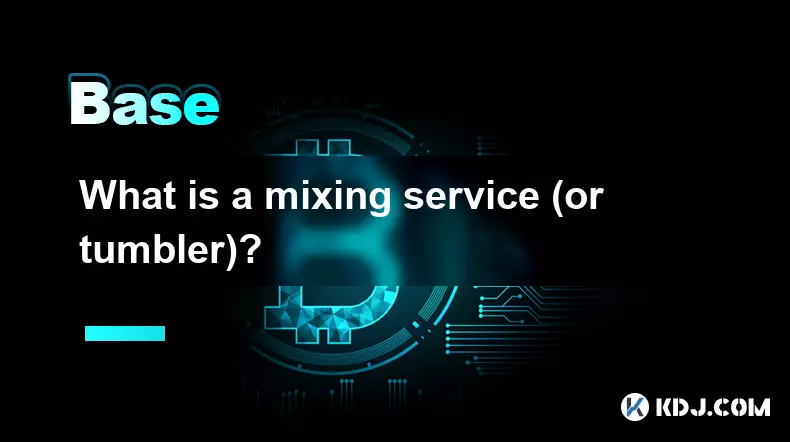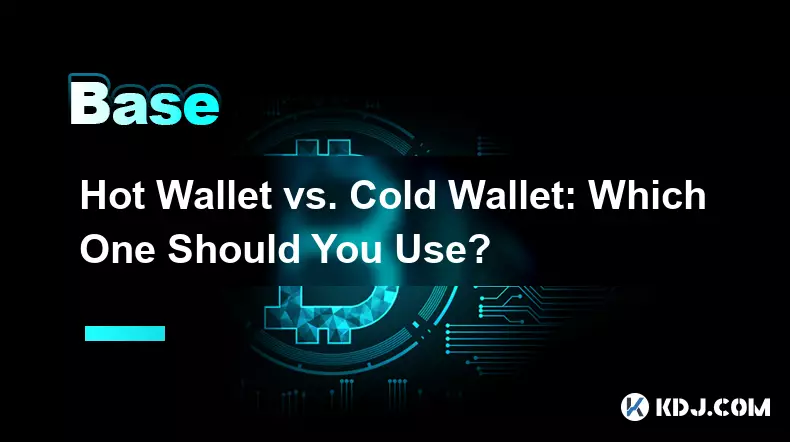-
 Bitcoin
Bitcoin $111200
0.03% -
 Ethereum
Ethereum $4321
0.45% -
 Tether USDt
Tether USDt $0.9999
-0.02% -
 XRP
XRP $2.824
0.89% -
 BNB
BNB $856.7
1.36% -
 Solana
Solana $204.4
0.79% -
 USDC
USDC $0.9998
0.00% -
 Dogecoin
Dogecoin $0.2178
2.21% -
 TRON
TRON $0.3317
-1.04% -
 Cardano
Cardano $0.8334
2.36% -
 Hyperliquid
Hyperliquid $47.48
5.04% -
 Chainlink
Chainlink $22.43
0.45% -
 Ethena USDe
Ethena USDe $1.001
0.01% -
 Bitcoin Cash
Bitcoin Cash $615.9
4.10% -
 Sui
Sui $3.404
2.84% -
 Stellar
Stellar $0.3610
1.92% -
 Avalanche
Avalanche $24.44
1.03% -
 Hedera
Hedera $0.2185
1.99% -
 Cronos
Cronos $0.2710
2.40% -
 UNUS SED LEO
UNUS SED LEO $9.567
0.12% -
 Litecoin
Litecoin $112.4
1.13% -
 Toncoin
Toncoin $3.084
-0.52% -
 Shiba Inu
Shiba Inu $0.00001239
2.12% -
 Polkadot
Polkadot $3.881
2.85% -
 Uniswap
Uniswap $9.394
0.47% -
 Dai
Dai $0.9997
-0.02% -
 Ethena
Ethena $0.7621
16.86% -
 Monero
Monero $269.5
0.69% -
 Aave
Aave $302.2
-1.65% -
 World Liberty Financial
World Liberty Financial $0.1825
-0.64%
What is a mixing service (or tumbler)?
Cryptocurrency mixers enhance privacy by breaking transaction trails, but using them can trigger exchange scrutiny or legal risks despite legitimate use cases.
Sep 06, 2025 at 07:00 pm

Understanding Cryptocurrency Mixing Services
1. A mixing service, commonly known as a tumbler, is a tool used in the cryptocurrency ecosystem to obscure the transaction trail between a sender and receiver. By pooling together funds from multiple users and redistributing them, these services break the direct link between wallet addresses, making it significantly harder for third parties to trace the origin of specific coins.
2. The process typically involves users sending their cryptocurrency—most often Bitcoin—into a centralized or decentralized mixing platform. The service then combines these inputs with those of other users, applies a delay, and sends back an equivalent amount minus a fee to new addresses provided by the user.
3. This technique leverages transaction obfuscation to enhance privacy. While blockchain analysis tools can often follow fund movements across addresses, mixing introduces complexity by fragmenting transactions and introducing time gaps, thereby increasing anonymity.
4. Mixing services do not alter the blockchain’s transparency but instead exploit its permissionless nature. Every transaction remains publicly visible, but the association between the original sender and final recipient becomes obscured through layered transfers and address rotation.
5. These platforms vary in design. Some operate with custodial models where they hold user funds temporarily, while others use non-custodial smart contract-based approaches, particularly on blockchains like Ethereum, to reduce counterparty risk.
Legitimate Use Cases for Tumblers
1. Individuals concerned about financial privacy may use mixers to prevent companies, governments, or malicious actors from tracking their spending habits. In regions with high surveillance or unstable financial systems, this can be a critical tool for personal security.
2. Businesses handling large volumes of cryptocurrency payments might utilize mixing to prevent competitors from analyzing their transaction patterns and inferring revenue or operational details.
3. Protecting user identity in decentralized applications (dApps) is another valid reason. When interacting with public ledgers, revealing wallet history can expose sensitive behavioral data, which mixers help mitigate.
4. Some developers and researchers use mixing services during testing phases to simulate real-world transaction diversity without exposing their primary holdings or development wallets.
5. Donors to controversial or politically sensitive causes may rely on mixers to avoid retaliation or censorship, ensuring their contributions remain unlinkable to their known digital identities.
Risks and Regulatory Challenges
1. Many jurisdictions view mixing services with suspicion due to their potential use in laundering illicit funds. Regulatory bodies such as the U.S. Treasury’s Financial Crimes Enforcement Network (FinCEN) have classified certain mixers as money service businesses, subjecting them to compliance requirements.
2. Using a tumbler can trigger red flags on exchanges. If mixed coins are deposited into a KYC-regulated platform, the account may face freezing or investigation, even if the user had no criminal intent.
3. Centralized mixers pose a significant trust issue. Operators have temporary control over deposited funds, creating opportunities for theft or exit scams. Several high-profile mixing platforms have disappeared with user assets.
4. Law enforcement agencies have successfully de-anonymized transactions from supposedly 'clean' mixed coins using advanced clustering algorithms and timing analysis, undermining the perceived security of these tools.
5. The legal status of mixers varies globally. While some countries allow their use under specific conditions, others have outright banned them, placing users at risk of prosecution simply for enhancing their transaction privacy.
Frequently Asked Questions
Are cryptocurrency mixers illegal?The legality depends on jurisdiction. In the United States and several European countries, operating a mixing service without proper licensing may violate anti-money laundering laws. However, using a mixer is not universally illegal, though it may attract scrutiny from financial institutions and regulators.
Can blockchain analysis detect mixed transactions?Yes, while mixers increase complexity, advanced forensic tools can sometimes identify patterns such as transaction timing, change outputs, and address clustering that suggest mixing activity. Complete anonymity is rarely guaranteed.
Do all cryptocurrencies need mixers for privacy?No. Some cryptocurrencies like Monero and Zcash are built with strong privacy features at the protocol level, making mixers unnecessary. Bitcoin and Ethereum, being transparent by design, are more commonly associated with external privacy tools like tumblers.
What happens if I send mixed coins to an exchange?Exchanges with strict KYC policies may flag or freeze deposits involving mixed funds. Some platforms automatically reject transactions from known mixer addresses, potentially resulting in loss of access or mandatory verification procedures.
Disclaimer:info@kdj.com
The information provided is not trading advice. kdj.com does not assume any responsibility for any investments made based on the information provided in this article. Cryptocurrencies are highly volatile and it is highly recommended that you invest with caution after thorough research!
If you believe that the content used on this website infringes your copyright, please contact us immediately (info@kdj.com) and we will delete it promptly.
- Kazakhstan's Crypto Leap: Stablecoins for Fees & the Rise of $BEST
- 2025-09-06 20:25:13
- Ozak AI: Presale ROI and the Promise of AI Projection – Is It the Next Big Thing?
- 2025-09-06 20:25:13
- ONDO Price Analysis: Riding the Wave of Tokenization and Cycle Predictions
- 2025-09-06 20:45:15
- BlockchainFX: Staking APY & Crypto Raise Redefining Passive Income
- 2025-09-06 21:05:17
- XRP's Resilience in the Crypto World: Navigating Regulation and Embracing Innovation
- 2025-09-06 21:45:13
- Pi Network, Protocol Upgrade, and Institutional Adoption: A New Era?
- 2025-09-06 20:45:15
Related knowledge

What is Layer 1 and Layer 2 in Blockchain?
Sep 06,2025 at 10:00pm
The Evolution of Decentralized Exchanges in the Crypto Ecosystem1. Decentralized exchanges (DEXs) have reshaped how traders interact with digital asse...

Hot Wallet vs. Cold Wallet: Which One Should You Use?
Sep 05,2025 at 06:19pm
Understanding Hot Wallets in the Cryptocurrency Ecosystem1. A hot wallet is a digital cryptocurrency wallet that remains connected to the internet at ...

What is "backtesting" a crypto trading strategy?
Sep 03,2025 at 10:55am
Understanding Backtesting in Crypto TradingBacktesting is the process of evaluating a trading strategy by applying it to historical market data. Trade...

What is a "crypto trading bot" and do they work?
Sep 02,2025 at 04:19pm
Understanding Crypto Trading Bots1. A crypto trading bot is a software application designed to automate the process of buying and selling cryptocurren...

What is a "copy trading" platform?
Sep 02,2025 at 07:00pm
Understanding Copy Trading in the Cryptocurrency Space1. A copy trading platform allows users to automatically replicate the trades of experienced inv...

What is "social trading" for crypto?
Sep 03,2025 at 09:00pm
Understanding Social Trading in the Cryptocurrency Space1. Social trading refers to a method where investors observe, follow, and automatically replic...

What is Layer 1 and Layer 2 in Blockchain?
Sep 06,2025 at 10:00pm
The Evolution of Decentralized Exchanges in the Crypto Ecosystem1. Decentralized exchanges (DEXs) have reshaped how traders interact with digital asse...

Hot Wallet vs. Cold Wallet: Which One Should You Use?
Sep 05,2025 at 06:19pm
Understanding Hot Wallets in the Cryptocurrency Ecosystem1. A hot wallet is a digital cryptocurrency wallet that remains connected to the internet at ...

What is "backtesting" a crypto trading strategy?
Sep 03,2025 at 10:55am
Understanding Backtesting in Crypto TradingBacktesting is the process of evaluating a trading strategy by applying it to historical market data. Trade...

What is a "crypto trading bot" and do they work?
Sep 02,2025 at 04:19pm
Understanding Crypto Trading Bots1. A crypto trading bot is a software application designed to automate the process of buying and selling cryptocurren...

What is a "copy trading" platform?
Sep 02,2025 at 07:00pm
Understanding Copy Trading in the Cryptocurrency Space1. A copy trading platform allows users to automatically replicate the trades of experienced inv...

What is "social trading" for crypto?
Sep 03,2025 at 09:00pm
Understanding Social Trading in the Cryptocurrency Space1. Social trading refers to a method where investors observe, follow, and automatically replic...
See all articles

























































































